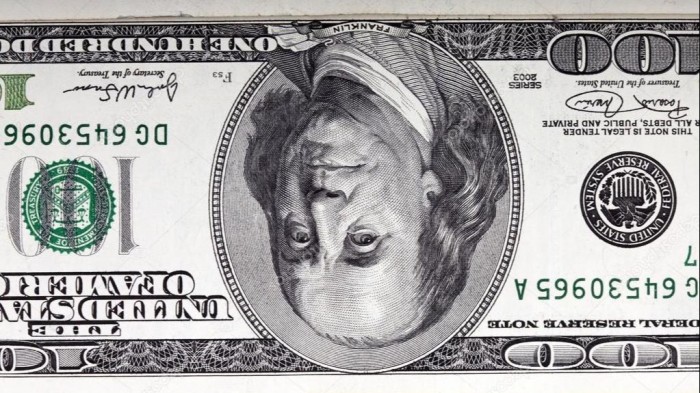Stay informed with free updates
Simply sign up to the US trade myFT Digest — delivered directly to your inbox.
George Saravelos, global head of FX research at Deutsche Bank, has been worried about the outlook for the dollar for a while. Recent events have not exactly calmed him down:
We are witnessing a simultaneous collapse in the price of all US assets including equities, the dollar versus alternative reserve FX and the bond market. We are entering unchartered [sic] territory in the global financial system.
Collapse is a bit strong, but it isn’t great that US stocks, bonds and the dollar are all gyrating lower lately. Notably, after a bounce over the past couple of days, the ICE dollar index is slipping again today:

With that in mind, here are Saravelos’s three main points, which we’ll quote at length given the heightened interest in the topic:
The market is rapidly de-dollarizing. It is remarkable that international dollar funding markets and cross-currency basis remains well behaved. In a typical crisis environment the market would be hoarding dollar liquidity to secure funding for its underlying US asset base. This dollar imbalance is what ultimately results in a triggering of the Fed swap lines. Dynamics here seem to be very different: the market has lost faith in US assets, so that instead of closing the asset-liability mismatch by hoarding dollar liquidity it is actively selling down the US assets themselves. We wrote a few weeks ago that US administration policy is encouraging a trend towards de-dollarization to safeguard international investors from a weaponization of dollar liquidity. We are now seeing this play out in real-time at a faster pace than even we would have anticipated. It remains to be seen how orderly this process can remain. A credit event in the global financial system that threatens the provision of short-term dollar liquidity is the point of greatest vulnerability which would turn dollar dynamics more positive.
The US administration is encouraging the sell-off in US Treasuries. The first order effect of current policy is of course the generation of a large negative supply-side shock that raises inflation and makes it harder for the Fed to cut rates. There is of course the bond basis trade that is being unwound. But there is something larger at play as well: a policy objective of reducing bilateral trade imbalances is functionally equivalent to lowering demand for US assets as well. This is not a theoretical consideration: the US has this week initiated trade negotiations with Japan and South Korea, with a specific reference to currency levels being a negotiating objective. It should not be overlooked that Japan is the largest official holder of US treasuries. An implicit negotiating objective of lowering USD valuations entails the possibility of the sale of US treasuries from the Japanese Ministry of finance. We argued two weeks ago that the whole Mar-A-Lago accord framework was flawed because it imposed fundamental inconsistencies in the desired economic objectives of the administration. We are now seeing those inconsistencies exposed in broad daylight.
Beware a trade war shift to a financial war. At the epicenter of the last few days’ escalation is the trade war with China. As our colleagues have highlighted China appears to be maintaining the optionality on weaponizing the currency while signalling a far more supportive domestic economic stance. With a 100%+ tariff on China, there is little room now left for an escalation on the trade front. The next phase risks being an outright financial war involving Chinese ownership of US assets, both on the official and private sector front. It is important to note there can be no winner to such a war: it will damage both the owner (China) and the producer (US) of those assets. The loser will be the global economy.
What could act as a circuit-breaker? Well, as we wrote this morning there’s already rising speculation that the Federal Reserve will have to act somehow to quell the turbulence in the Treasury market.
We imagine the Fed will be loath to bail out leveraged hedge fund trades (again), but Saravelos reckons that it may have “no other option” than re-starting emergency Treasury purchases if the disruptions continue to deepen:
This would be very similar to the Bank of England intervention following the gilt crisis of 2022. Ultimately, the Fed’s job would be to aid the accelerated de-dollarization dynamic we alluded to earlier in this piece.
While we suspect the Fed could be successful in stabilizing the market in the short-term, we would argue there is only one thing that can stabilize some of the more medium-term financial market shifts that have been unleashed: a reversal in the policies of the Trump administration itself.
Further reading:
— America’s endangered ‘exorbitant privilege’ (FTAV)
https://www.ft.com/content/15547313-06ed-4de8-92f2-ca554aee698f


